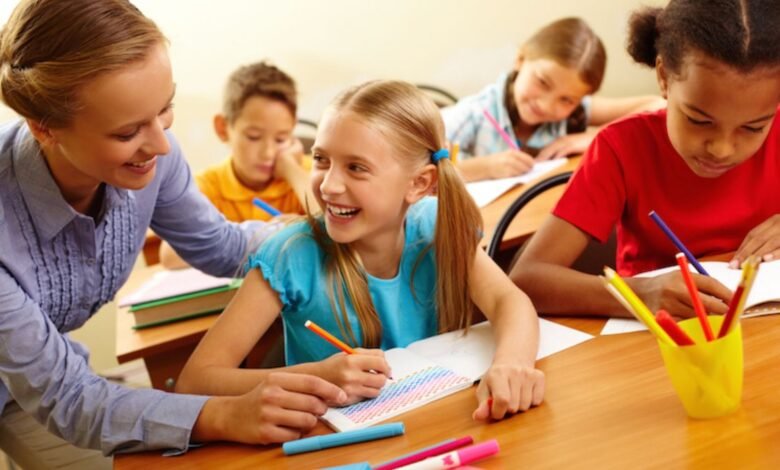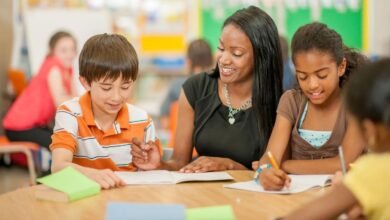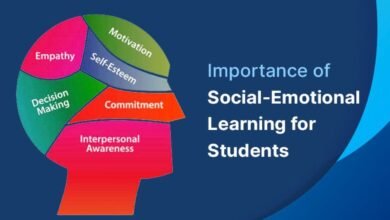How to Create a Positive Learning Environment

Creating a positive learning environment is crucial for fostering student engagement, promoting effective learning, and supporting emotional well-being. A well-crafted educational atmosphere can profoundly impact students’ academic and social development. This article will delve into various strategies educators can use to create a positive learning environment, covering aspects such as classroom setup, teacher-student relationships, effective communication, inclusive practices, and fostering a growth mindset.
Understanding the Importance of a Positive Learning Environment
A positive learning environment is one where students feel safe, respected, and valued. It promotes an atmosphere of mutual respect, support, and open communication, which are essential for effective learning. When students perceive their learning environment as positive, they are more likely to participate actively, engage with the content, and collaborate with their peers. This environment also contributes to reducing anxiety and stress, allowing students to focus better and perform to their potential.
Creating such an environment goes beyond maintaining classroom discipline; it involves understanding the diverse needs of students and adopting practices that promote inclusivity and engagement. A positive environment not only enhances academic achievement but also supports the development of social and emotional skills. These skills are crucial for students’ long-term success, as they navigate not just the educational landscape but also their future personal and professional lives.
Establishing Clear Expectations and Consistent Routines
One of the foundational steps in creating a positive learning environment is establishing clear expectations and routines. When students know what is expected of them and what they can expect from the teacher and their peers, it creates a sense of stability and predictability. This predictability reduces anxiety and allows students to focus more on learning rather than worrying about what might happen next.
To implement this, educators should communicate their expectations clearly at the beginning of the school year or term. This includes outlining academic expectations, classroom behavior, and procedures for various classroom activities. Additionally, establishing consistent routines, such as beginning each class with a warm-up activity or having a regular schedule for homework and assessments, helps students develop good habits and reduces uncertainty.
Consistency is key to reinforcing these expectations. When students see that rules and routines are applied fairly and consistently, it builds trust and reinforces the positive learning environment. This consistency should also extend to consequences for breaking rules, which should be fair, predictable, and focused on learning rather than punishment.
Building Strong Teacher-Student Relationships
The relationship between teachers and students is at the heart of a positive learning environment. When students feel that their teachers genuinely care about them, they are more likely to engage in the learning process. Building strong teacher-student relationships requires empathy, respect, and open communication.
Teachers can foster positive relationships by showing interest in their students’ lives outside of academics, acknowledging their successes, and providing support when they face challenges. It is also important for teachers to be approachable and to listen actively to students’ concerns and ideas. When students feel heard and understood, it fosters a sense of belonging and motivation to participate in the classroom.
Moreover, maintaining high expectations while providing the necessary support and encouragement helps build students’ confidence. Teachers should aim to be positive role models, demonstrating behaviors such as kindness, patience, and resilience. This not only enhances the teacher-student relationship but also encourages students to emulate these positive behaviors in their interactions with others.
Creating an Inclusive and Diverse Classroom
Inclusivity is a cornerstone of a positive learning environment. An inclusive classroom is one where all students feel welcomed, respected, and valued, regardless of their background, abilities, or learning styles. It recognizes and celebrates diversity, which can enrich the learning experience for all students.
To create an inclusive classroom, educators should use teaching strategies that cater to diverse learning needs. This includes incorporating a variety of instructional methods, such as visual aids, hands-on activities, and group work, to ensure that all students have an opportunity to engage with the material in a way that suits their learning style. It is also important to provide accommodations for students with special needs, such as additional time for assignments or alternative formats for tests.
Promoting an inclusive classroom also involves encouraging students to appreciate diversity and to work collaboratively with peers from different backgrounds. This can be achieved through activities that promote cultural awareness and sensitivity, as well as by addressing any biases or stereotypes that may arise. By fostering a sense of community and respect for diversity, teachers can create a learning environment where all students feel valued and included.
Encouraging Student Engagement and Ownership of Learning
Student engagement is a key component of a positive learning environment. When students are actively engaged in their learning, they are more motivated, perform better academically, and exhibit fewer behavioral issues. Engagement can be encouraged by making learning relevant and meaningful to students’ lives.
To promote engagement, educators should provide opportunities for students to take ownership of their learning. This can be done by allowing students to have a say in what they learn, how they learn, and how they demonstrate their learning. For example, offering choices in assignments or projects, incorporating student interests into the curriculum, and using inquiry-based learning approaches can make learning more engaging and personalized.
Additionally, using interactive and collaborative activities, such as group discussions, peer reviews, and problem-solving tasks, encourages students to participate actively and learn from each other. Encouraging student-led activities, such as presentations or teaching a lesson, can also foster a sense of ownership and responsibility for their learning.
Fostering a Growth Mindset
A growth mindset is the belief that abilities and intelligence can be developed through effort, persistence, and learning from mistakes. Fostering a growth mindset in students is crucial for creating a positive learning environment. When students believe that they can improve and succeed through hard work and dedication, they are more likely to take on challenges, persevere through difficulties, and view mistakes as learning opportunities.
Teachers can promote a growth mindset by providing positive feedback that focuses on effort and improvement rather than just the end result. For example, instead of saying, “You’re so smart,” teachers can say, “I can see you worked really hard on this.” This type of feedback encourages students to value the process of learning rather than just the outcome.
Additionally, creating a classroom culture where mistakes are seen as a natural part of the learning process and where students are encouraged to take risks can help develop a growth mindset. Teachers can model this by sharing their own learning experiences and discussing how they overcome challenges.
Utilizing Effective Classroom Management Techniques
Effective classroom management is essential for maintaining a positive learning environment. It involves creating a structured environment where students know what to expect and feel safe and supported. Effective classroom management techniques include setting clear expectations, providing positive reinforcement, and addressing behavioral issues promptly and fairly.
One effective strategy is to use positive reinforcement to encourage desired behaviors. This can include verbal praise, rewards, or a points system where students earn privileges for displaying positive behavior. Positive reinforcement not only promotes good behavior but also helps build a positive classroom climate where students feel recognized and appreciated.
Additionally, addressing behavioral issues promptly and fairly is crucial for maintaining a positive learning environment. When students see that disruptive behavior is addressed consistently and fairly, it reinforces the importance of following classroom rules and respecting others. It is important to approach behavioral issues with a focus on learning and growth, rather than punishment, to help students understand the impact of their behavior and how they can improve.
Creating a Physically and Emotionally Safe Classroom
A positive learning environment is one where students feel both physically and emotionally safe. Physical safety involves ensuring that the classroom is free from hazards and that there are clear procedures in place for emergencies. Emotional safety involves creating a supportive atmosphere where students feel comfortable expressing themselves without fear of judgment or ridicule.
To create a physically safe classroom, educators should conduct regular safety checks and ensure that all equipment and materials are used properly. Establishing clear rules for safe behavior and ensuring that students understand and follow these rules is also important.
Creating an emotionally safe classroom involves fostering a culture of respect and kindness. This can be achieved by promoting positive interactions among students, addressing bullying or harassment promptly, and encouraging students to support each other. Providing opportunities for students to express their thoughts and feelings, such as through class discussions or reflective writing activities, can also help create an emotionally safe environment.
Incorporating Social-Emotional Learning (SEL) into the Curriculum
Social-emotional learning (SEL) involves teaching students skills such as self-awareness, self-management, social awareness, relationship skills, and responsible decision-making. Incorporating SEL into the curriculum is an effective way to create a positive learning environment, as it helps students develop the skills needed to navigate social interactions and manage their emotions effectively.
To incorporate SEL into the curriculum, educators can integrate SEL activities and discussions into regular classroom activities. For example, using literature or current events to discuss empathy, conflict resolution, or ethical decision-making can help students develop social-emotional skills. Additionally, providing opportunities for students to practice these skills through role-playing or group activities can help reinforce their learning.
SEL can also be supported through classroom routines and practices, such as using a “check-in” activity at the beginning of each class to allow students to share how they are feeling and to foster a sense of community. By incorporating SEL into the curriculum, educators can help students develop the skills needed to create and maintain positive relationships, manage their emotions, and make responsible decisions, all of which contribute to a positive learning environment.
Conclusion
Creating a positive learning environment is an ongoing process that requires intentional effort and a commitment to fostering a supportive, inclusive, and engaging classroom. By establishing clear expectations, building strong relationships, promoting inclusivity, encouraging engagement, fostering a growth mindset, utilizing effective classroom management techniques, ensuring safety, and incorporating social-emotional learning, educators can create an environment where all students feel valued, respected, and motivated to learn. A positive learning environment not only enhances academic achievement but also supports the social and emotional development of students, preparing them for success in school and beyond.



